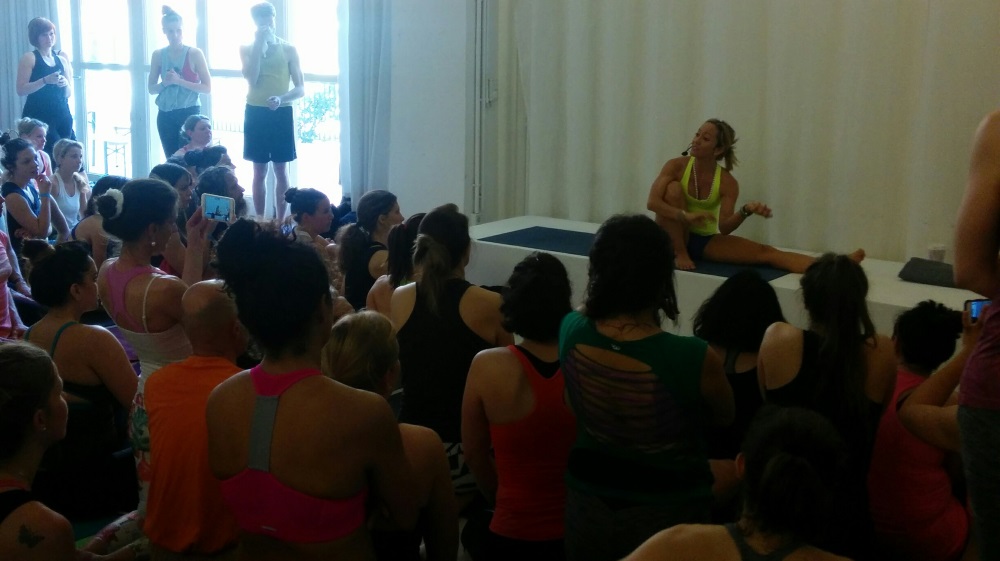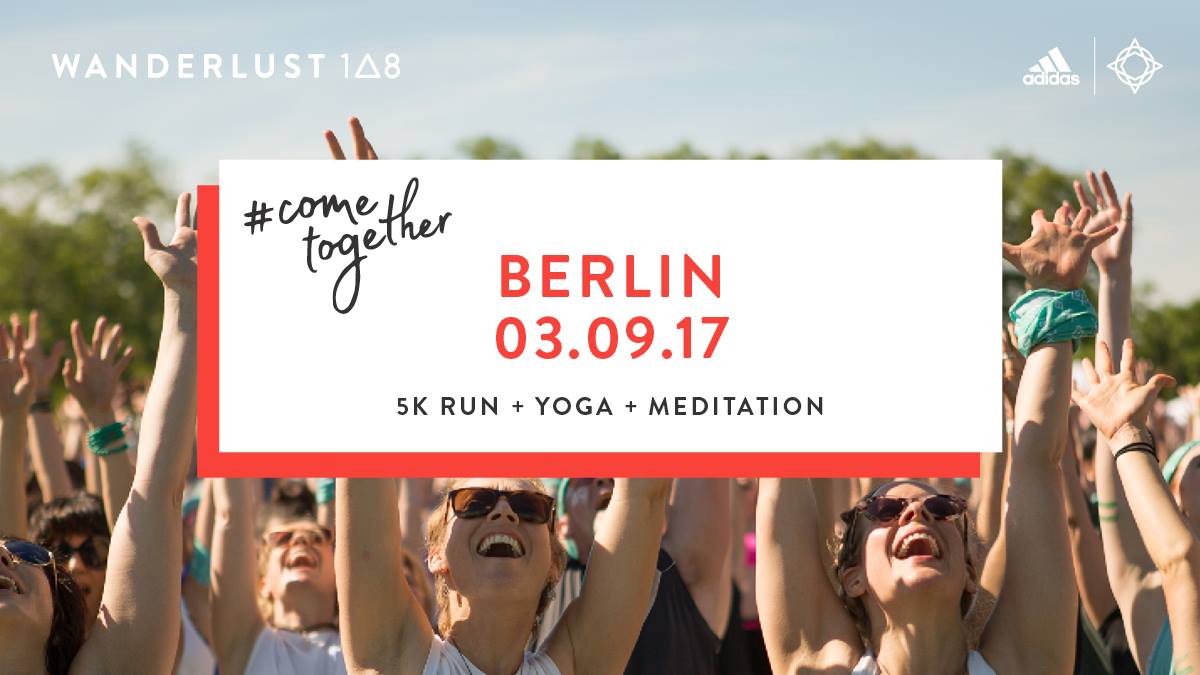Today I was lucky to join one of Kino McGregor’s workshops in Berlin on “Ashtanga Magic: Breath, Posture and Gaze”.
As I have never participated in an Ashtanga class before, it was a great way to delve into the secrets of the Ashtanga Yoga lineage, known as the Tristana method.
Kino started with her interpretation of the Ashtanga Opening Prayer and we were chanting it in call and response. A beautiful way to begin the day and the practice.
We then began with the Sun Salutations, progressing through the standing postures and seated positions. Kino guidesd us into a devotional practice that mergers the physical and subtle bodies and honors tradition while embodying the present.

The focus of this workshop was on the Tristana method. Tristana means three places of attention or action and the union of these three placed is the practice of Ashtanga Yoga.
- Breath (Pranayama)
- Posture (Asanas & Bandhas)
- Focal Point / Focused Gaze (Drishti)
While breath and posture are quite self explaining, the concept of Drishti was new to me and it turned out to be very valuable for my personal practice.
As many of us, I am a predominantly visual human being. I guess every Yoga practitioner has been at the point when you find yourself looking around during practice, checking out the pose or the outfit of the student on the next mat. I often find myself looking at everything else around me and forget to focus on my practice. The tricky part is: Where your eyes are directed, your attention follows!
Allowing your eyes to wander creates distraction and lead us further away from our practice. To avoid this and to control and direct our focus, we can use the so called Yogic gaze or Drishti.
The technique of Drishti
While external vision will lead us away from our practice, Drishti helps us to draw our awareness and attention inward. The use of Drishti in our Asana practice serves both as a training technique and as a metaphor for focusing consciousness toward a vision of oneness. Drishti helps us to overcome the limits of “normal” vision. This is important, as often we are limiting ourselves when we only see what we want to see: “The student on the next mat is more flexible”, “The outfit of the girl in front of me most have cost a fortune”, and so on. Our opinions, habits and prejudices prevent us from seeing unity. Drishti can help us seeing the Divine everywhere around us. It becomes a technique for removing the ignorance that obscures the true vision, a technique that allows us to see the good everything, everyone and ourselves.
The concept or technique of Drishti is not unique to the Ashtanga method. In B.K.S. Iyengar comments that “the eyes play a predominant part in the practice of Asanas. Drishti varies from posture to posture. Ashtanga practitioners are taught to direct their gaze to one of nine specific points. The purpose of these gaze points is to train the mind to stay focused by using the eyes. In general, it is said to focus your gaze in the direction the pose is moving. You should never force yourself to gaze in a way that strains your eyes, brain, or body. The gaze should rather be soft, like you look through something. Soften your focus to send your attention beyond outer appearance to inner essence.
Here are some examples of Asanas and their gazing point:
- In Urdhva Hastasana, the first movement of the Sun Salutation, we gaze up at the thumbs, using Angusthamadhye Drishti.
- In Adho Mukha Svanasana (Downward-Facing Dog Pose), we use Nabhichakra Drishti, gazing at the navel.
- In Urdhva Mukha Svanasana (Upward-Facing Dog Pose) the gazing point is the nose tip. Know as Nasagra Drishti.
- Hastagrahe Drishti, gazing at the (usually extended) tips or palm of the hand, is used in Trikonasana (Triangle Pose).
- In most seated forward bends, we gaze at the big toes: Padayoragre Drishti.
- In seated spinal twists we gaze as far as we can in the direction of the twist. This is called Parsva Drishti. Right and left side are treated as separated gazing points.
- Urdhva Drishti, eyes pointing upwards, to the sky (gazing up to infinity), helps us to stay focused in Virabhadrasana I (Warrior Pose I).
- Not only in Asanas, but also in meditation Drishti can be practiced. Here we gaze toward the Ajna Chakra, the third eye, called Naitrayohmadya Drishti or Bhrumadhye Drishti.
I’m very happy that I learned more about the Tristana method and especially Drishti today and even when I’m not practicing Ashtanga Yoga, I will inherit the technique to my usual practice.
Thank you, Kino, for another inspiration!




